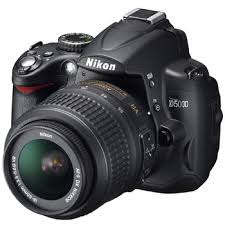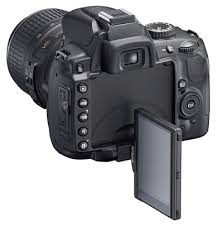
Digital SLRs are dirt cheap these days. We see more and more people purchasing Digital SLR on a daily basis but quite often these newbies are also pretty much disappointed at how they were promised beautiful pictures yet fail to achieve.
The most common problem would be the lack of understanding of Shutter Speed, Aperture and ISO – the 3 fundamentals of capturing image, and capturing it properly.
In fact many I’ve got to know many who are new when it comes to photography, and it’s been the same question time and again and I’ve been spending quite a fair bit of time explaining this and that. So now here it is – my (simplified, as usual) version of explaining how Shutter Speed, Aperture and ISO works.
While far from being the best when it comes to explaining the fundamentals, I do hope you still gain some knowledge after reading this article.
Always keep it in mind that what a camera does is capturing light.

What you see through the viewfinder is what the camera sees. The light enters through the lens, hit on the on the mirror and reflected as to what is shown on the viewfinder.
When the shutter button is pressed, the camera takes the shot based on the shutter speed, aperture and ISO set on the camera – these 3 factor holds greatest influence on the exposure of your shots. The aperture blades close in, the shutter lifts and thelight lands on the sensor, the camera captures it.
Don’t worry if you don’t know what those terms mean, continue reading the article and you’ll understand it better as I elaborate.
Remember, no matter how good your composition is, ultimately it’s the exposure that determines whether your shot is a success. And to get the correct exposure, you’ll need to know how to balance these elements to get the right amount of light to make the shot look right.
While this article talks about the Digital SLR, the same concept actually works for SLRs (referring to the non-Digital types). The difference would be that light would be captured on film instead of light sensors.
Shutter Speed?
So what is shutter speed? Shutter speed is the setting on your camera that decides how long the shutter should open. The longer the shutter opens, the more the amount of light is captured on the sensor. This is a mirror though, behind it is the shutter, which is right in front of the sensor.

Think of it as your eye lids. The shutter is basically a closed eye lid, once the shutter button is clicked, the eye lid opens and closes. By setting the shutter speed, you’re telling the camera to duration to keep the eye lid open.
For our human eye, the longer the eye lid is open also means more light has entered the eye. Stare at some bright lightbulb for half a second and your eyes barely hurt. Stare at the bright lightbulb for 5 seconds and you’re stuck with the ghost of the lightbulb. The same concept applies to shutter. Assuming all factors (like aperture and ISO) remain the same, the longer the shutter is opened, the more exposure you get – which is why another common term for Shutter Speed is EXPOSURE TIME.
I prefer to use the term EXPOSURE TIME as I find it to express the purpose of having the shutter movement better, but for the sake of this article I’ll use Shutter Speed as I think it’s the more commonly used term.
Aperture?
Aperture refers to the diaphragm opening inside a lens. How wide the aperture is open is indicated by the F-number. The lower the number, the wider it is. The wider it is, more light goes through it.

Think of it at your eye lids again, but instead of being the duration of the eye lid being kept open, aperture is like how wide your eye lid is to open.
or here’s how one of our readers thought of it….
“Think of it at your pupil size, in a dark room your pupils get wider and lets more light in to your eyes. On a sunny beach your pupils retracts and get smaller.”
When you set the aperture value to the lowest value available (meaning widest aperture) then it would open the aperture blades as wide as it can. The aperture will close to the width as indicated by the setting in the camera. Increase the value and the aperture will reduce in opening size accordingly.

The aperture available depends on the lens you’re using. The F-number will also be displayed on your camera’s indicator, in the image below we see that the aperture is indicated – at f/2.5

ISO?
ISO is all about sensitivity, in the case of the Digital SLR – it’s about the sensitivity of the sensors. By setting the ISO, you’re telling the camera how sensitive it should be when it comes to absorbing light. The higher the ISO setting, the more sensitive the sensor is towards light.
Think of the camera sensor as your retina. The ISO setting basically tells your retina how sensitive it should be Too bad it’s not possible to tell your retina how to behave.
Do remember that higher sensitivity also means higher NOISE level, it’s not that it’s bad. Some people are picky on noise. Others just couldn’t be bothered. Noise is more noticeable on the darker areas of a picture, you’ll see those tiny little dots that resemble little grains.

Notice the noise on the darker parts of the picture?
Hope this will be useful to the DSLR beginners.

















